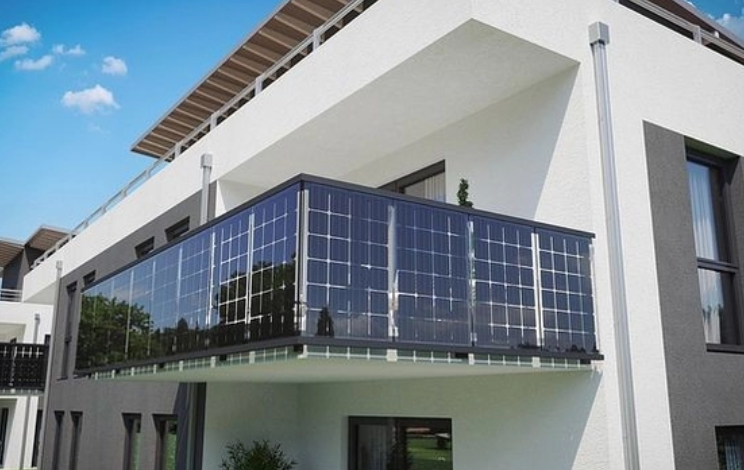Bipv Panel Innovations and Applications in Modern Architecture

Building-integrated photovoltaics (BIPV) panels are solar energy systems designed to be a seamless part of a building’s structure, such as roofs, façades, or windows. These panels not only generate electricity but also replace traditional building materials, providing a dual function of power production and structural use. Their integration offers an efficient way to use otherwise unused surfaces for clean energy without altering the building’s appearance.
BIPV panels appeal to architects and developers looking to combine sustainability with design. While they often involve higher upfront costs than conventional solar panels or materials, their ability to reduce energy costs and blend aesthetically with building designs makes them a valuable long-term investment. This technology is increasingly relevant in modern construction aiming for energy efficiency and environmental responsibility.
Understanding BIPV Panels
BIPV panel serves as both building materials and solar energy generators. They replace or integrate with traditional construction elements, offering a dual function in the building envelope. The design, technology options, and operational mechanisms define their unique role in modern architecture.
Definition and Key Features
Building-Integrated Photovoltaics (BIPV) are solar systems embedded within a building’s structure, such as roofs, facades, or windows. Unlike traditional solar panels that are mounted on existing surfaces, BIPV units substitute conventional materials. This integration makes them part of the building itself rather than an addition.
Key features include aesthetic integration, energy generation, and space efficiency. BIPV panels maintain the building’s design coherence without bulky mounting hardware. They also contribute to sustainability by reducing reliance on external energy sources.
BIPV systems vary in transparency, color, and shape, adapting to architectural needs. Their ability to produce electricity directly from sunlight while functioning as roofing or cladding material distinguishes them from typical solar panels.
See also: Financing for Small Businesses Explained: Key Options and Strategies for Success
Types of BIPV Technologies
BIPV technologies differ mainly by their application and material type. Common types include:
- PV Roof Systems: Integrated into roofing materials like shingles, tiles, or metal panels.
- Curtain Walls and Facades: Solar glass panels incorporated into building exteriors.
- Windows and Skylights: Transparent or semi-transparent PV modules that allow light while generating power.
Materials vary from crystalline silicon to thin-film technologies. Thin-film options are often used in windows for their partial transparency.
Each technology also differs in efficiency, cost, and visual impact. Selection depends on the building’s design goals, climate, and budget constraints.
How BIPV Panels Work
BIPV panels operate similarly to conventional solar cells by converting sunlight into electricity. Photovoltaic cells embedded in the building materials absorb sunlight, creating an electric current.
The energy generated can power the building, reducing dependency on the grid. Wiring is integrated within the building structure, minimizing visual clutter.
Ventilation around BIPV units, especially on roofs, is important to keep cells cool and maintain efficiency. Some BIPV systems include modules that replace glass or tiles but require proper installation to balance structural integrity and energy performance.
Benefits and Applications of BIPV Panels
BIPV panels serve dual functions as both building materials and solar energy generators. They optimize space by integrating into structural elements while contributing to reduced energy consumption and enhanced building design.
Energy Efficiency and Sustainability
BIPV panels generate electricity directly from sunlight, reducing reliance on external power sources. By integrating seamlessly with building envelopes, they improve energy performance without occupying additional land or roof space.
Their use supports sustainability by lowering greenhouse gas emissions and reducing a building’s overall carbon footprint. BIPV systems can also contribute to meeting green building certifications and energy code requirements.
Energy savings often result from combining BIPV with insulation or shading properties, enhancing thermal regulation within buildings. This integration helps lower heating and cooling loads, adding to overall efficiency.
Architectural Integration
BIPV panels are designed to be part of a building’s structure, such as roofs, façades, or windows. This integration offers a cleaner and more streamlined appearance compared to traditional solar panels.
Materials like coloured solar glass or translucent modules allow architects to maintain aesthetic appeal while harnessing solar energy. BIPV solutions can match building design elements, providing flexibility in style and form.
By replacing conventional building materials, BIPV reduces installation complexity and material waste. It also supports innovative architectural designs that combine sustainability with functionality.
Common Use Cases
BIPV is widely used in commercial and residential buildings to generate on-site electricity. Typical applications include roof tiles, curtain walls, window glazing, and canopies.
It suits new constructions and retrofits where exterior design and renewable energy generation are priorities. BIPV can also be applied in urban environments where space for traditional solar panels is limited.
Additionally, BIPV finds utility in façades that serve as shading devices while producing energy. This dual use improves building performance and maximizes the return on investment in solar technology.





